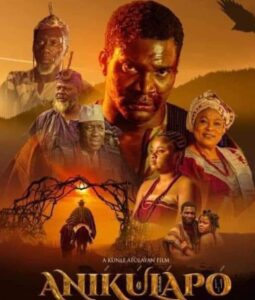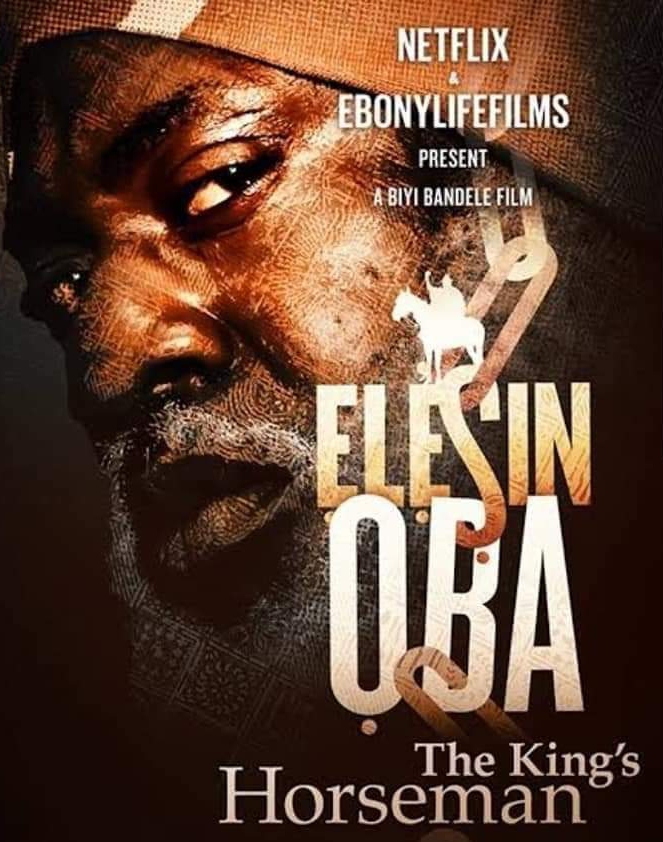By Gani Kayode Balogun jnr
As a boy brought up on a staple diet of the Alarinjo Traveling Theater, the forerunner of the Yoruba Cinema, which itself is the rock Nollywood was erected, on Atoka, the iconoic photonovel magazine, and the music of the masters, the last decade had been that of a disappointment about the direction the genre was heading.
Not only was storytelling, the critical backbone of any cinematic endeavor, seriously lacking, but the principle of suspension of disbelief, which is the main criteria to overlooking certain basic flaws and simply escape reality for a couple of hours at least, was becoming impossible to sustain.
There were bright spots of course. Directors like Tade Ogidan, Tunde Kelani and a host of others, managed to produce iconic movies that were both critical and commercial success. Even of their outputs were few and far between.
But the majority of what passes as Yoruba movies, for the better part of the last two decades were, well, pedestrian.
With the heavy influx of funds of questionable origins, especially from the non Yoruba side of the industry, there was a shift in the business model from being a director’s industry to a marketer’s industry, the insertion of “actors and actresses” whose only talent is a pretty face, a well chiselled body and readiness to “play ball” with the marketers became the norm.
That business model, which is based not on talent, but on looks, is not a bad thing, and it is not peculiar to Nollywood. But the difference is that in those other “hoods” , there were conscious attempts at merging the star quality of the pretty ones with rigorous requirements of talent enhancement, either through acting, dancing or singing coaches, as well as providing stunt doubles.
The first casualties of course, were talent and role interpretation. As long as the girl is fine, well endowed and can shout instead of voice modulation befitting the character’s nuanced delivery. As long as the guy is tall, has barrel chest and can speak in unintelligent monotones, we are good to go.

Due to the seemingly unlimited funds available to the non Yoruba sectors of the industry and their dominance of the supply chain, The Yoruba movie makers had no choice but to buckle under, and they too started churning out banal, shoot by the numbers unrelatable content as entertainment.
For an ethnic nation that prides itself in using such outlets to preach mortality, it was an abduction of responsibility.
Bollywood prides itself in it’s good over evil mantra, even if they have to sing to put it across.
Have you ever wondered that in Indian movies, the hero will beat the villain to a pulp, but at the end the police will arrive in time to arrest the bad man?
And that in Hollywood, you will not get to see the homeless pandemic overtaking LA, or the Gun death epidemic in Chicago, even though these places are practically next door to the biggest Movie studios in the World?
When my childhood friend and Oshodi big boy, Dayo Thomas took over the Nigerian Film and Video Censors Board,his first challenge, apart from correcting the lopsided ethnic make up of the Board, was insisting on Movies projecting, and not demonizing, our Culture and promoting other agenda.
I may be wrong, but it is only in Yoruba movies that an “adahunse” is portrayed as a babalawo, who prepared an evil concortion that only a pastor or imam can unravel.
What about the pastor casting a spell that only an adahunse can lift?
Bit I digress.
When AyinlaThe Movie was booking theatres, there were theatre owners who were skeptical that a Yoruba movie can be a money spinner because of its”limited’ audience.
Ayinla turned out to be one of the highest earners for 2021 in cinemas.
Kunle Afolayan’s Anikulapo was the most watched non English film on Netflix so far this year. My late brother, Biyi Bandele’s Elesin oba is already in the top 10 on Netflix, Femi Adebayo’s Agesikole made over six hundred million naira in cinemas!
What makes these movies, as well as those by Ibrahim Chatta and Lekan Wasiudeen so successful?
Simple, they returned to telling the stories of our people in a visually stunning way. They employ the most modern of technology to tell the oldest of stories. They returned to promoting the Omoluabi ethos of honor, probity, character, hospitality,valour, courage and hard work.
Furthermore, they emphasized the bedrock of our civilization: That everything thing we do have consequences. That ultimately, good will overcome evil, most of the time.
What they have done is not perfect, and I can write a critique on each that will be a mile long, but at least they are telling our stories, in our way, for generations unborn to relate with.
After all, asepamo lo wa, ko si asegbe.
The Renaissance has begun.
My 10kobo.
Dear readers, we really need your support to keep on serving you with authoritative, truthful, and juicy stories everyday. For your support, please reach out to the editor @gavelinternational66@gmail.com

